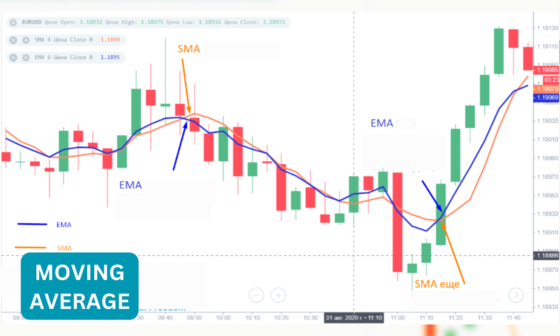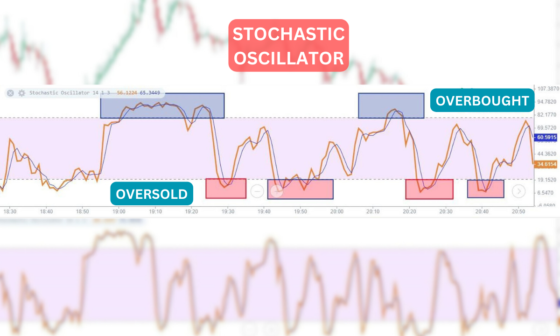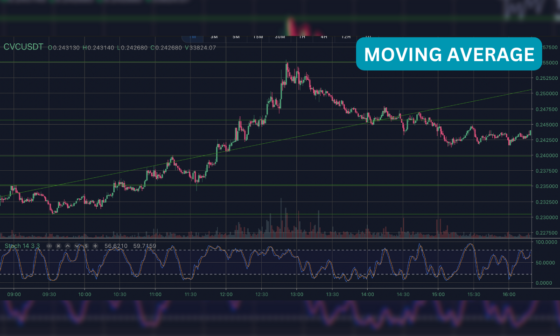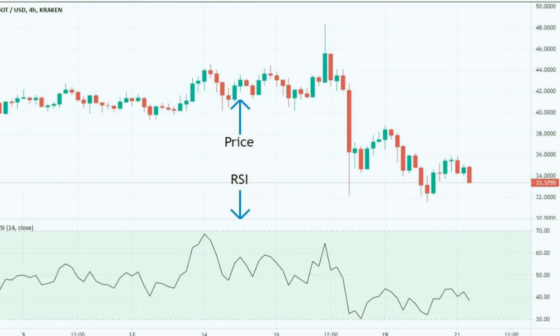Who is Jesse Livermore?
Jesse Livermore, a name etched in the annals of trading history, stands as a legendary figure whose influence on the financial world remains enduring. Livermore was born in 1877, his journey from humble beginnings to becoming one of the most iconic traders of his era is a testament to his unparalleled insights and trading acumen.
Livermore’s early years were far from the world of finance and trading. He didn’t receive a formal education, and his family’s financial circumstances were challenging.
During his teenage years, Livermore found himself working in various odd jobs, including as a chalkboard boy in a local brokerage firm. This early exposure to the stock market sparked his interest in trading, and he began to learn the ropes of the financial world.
Livermore’s childhood was marked by financial struggles and limited opportunities, but it was also a time when he started to lay the foundation for his future in trading.
His legacy continues to inspire and shape trading strategies, reminding us of the perpetual dance between risk and reward in the world of finance.
He faced a significant setback during the 1929 Stock Market Crash. He had anticipated a market decline and took a short position, but his timing was off, resulting in substantial losses. Livermore’s financial difficulties led him to file for bankruptcy in 1934.
This event highlighted the unpredictable nature of financial markets and emphasized the importance of risk management. Despite this setback, Livermore’s resilience and ability to learn from his mistakes eventually led to a remarkable comeback, solidifying his status as one of history’s most influential traders.
The Extraordinary Path to Success
Livermore’s ascent to prominence was not a linear trajectory but a tumultuous journey paved with both triumphs and pitfalls. He made and lost colossal fortunes multiple times, becoming a symbol of both unparalleled success and the unrelenting challenges of trading.
His journey wasn’t just about monetary gains; it was a canvas where he painted the art of trading with audacious strokes. He is called a Wall Street legend.
Cracking the Code: Livermore’s Trading Methods
Jesse Livermore’s approach to trading was akin to deciphering a complex code that governed the ebb and flow of financial markets. His methods were not merely about making transactions; they were a calculated and strategic art form.
Livermore’s trading methodology was a symphony of insight, analysis, and intuition that allowed him to navigate the intricacies of the market with remarkable precision.
Through a combination of understanding market trends, harnessing price action through tape reading stock prices, and mastering the art of patience and timing, Livermore was able to consistently stay ahead of the curve.
His methods were a manifestation of his deep understanding of market psychology and his unwavering commitment to discipline, setting him apart as a true master of the trade.
Understanding the Market Pulse
Livermore’s genius lay in his ability to decipher the hidden rhythms of the market. He understood that beneath the chaotic fluctuations lay discernible patterns shaped by economic forces. By identifying these trends, he was able to position himself ahead of the curve.
Tape Reading: Unveiling Price Action
Livermore’s approach to price action was revolutionary. He believed that the ticker tape, which displayed real-time stock prices, held the key to market sentiment. Reading between the lines of this tape, he could gauge the intentions of institutional players and act accordingly.
The Art of Patience and Timing
Patience was Livermore’s silent weapon. He recognized the cyclic nature of markets and waited patiently for the opportune moment to strike. His uncanny timing, combined with the wisdom to stay on the sidelines when necessary, amplified his trading prowess.
The Golden Rules of Livermore’s Trading Wisdom
Rule 1: Cut Losses, Ride Profits
In Livermore’s rulebook, cutting losses swiftly was paramount. He understood that losses are inevitable in trading, but minimizing their impact is within a trader’s control. On the flip side, he advised allowing winning trades to run their course, squeezing every drop of profit.
Rule 2: Trust Data, Distrust Assumptions
Livermore was a data-driven trader in an era of gut feelings. He admonished against trading based on opinions, biases, or emotions. Instead, he urged traders to rely on concrete market data before making decisions.
Rule 3: Discipline – The Trader’s Mantra
Discipline was the cornerstone of Livermore’s success. He cautioned against overtrading, the sirens’ call that often lures traders to their downfall. Adhering to a disciplined approach, he believed, was the key to consistency.
Rule 4: Trends Trump Timing
Timing the market perfectly was a fool’s errand, according to Livermore. Instead, he advocated riding the prevailing trend. While catching market tops and bottoms might elude even the best, identifying and profiting from the core of a trend was a surer path to success.
Some other rules:
- Markets are never wrong your opinions often are. Back your judgment and never trust your opinion, until the market’s action itself confirms your opinion.
- Money is made by sitting, not trading. It takes time to make money. Don’t give me timing; give me time
- Buy right, sit tight. Big movements take time to develop. Men who can both be right and sit tight are uncommon
- Money cannot consistently be made by trading every day or every week during the year
- Nothing new ever occurs in the business of speculating or investing in securities and commodities
- Never average losses
- The human side of every person is the greatest enemy of the average investor or speculator. Wishful thinking must be banished
- Buy in a bull market and sell in a bear market.
Livermore’s Price Patterns
Jesse Livermore, a trading luminary of his time, was known for his unique approach to analyzing price patterns in the financial markets.
His expertise lies in deciphering the intricate language of price movements to identify trends and potential opportunities. Livermore’s price patterns weren’t mere technical indicators; they were reflections of market sentiment and underlying forces.
Through meticulous tape reading and astute observation of price action, he could unveil the intentions of market participants, providing him with a competitive edge.
Livermore’s mastery of price patterns allowed him to make informed decisions and navigate the complexities of the market landscape, leaving a lasting legacy for traders seeking to understand and leverage price movements to their advantage.
Adapting Livermore’s Legacy to the Modern Market
In an era of algorithmic trading and digital platforms, Livermore’s principles remain as relevant as ever. The allure of quick gains and the fear of missing out may have intensified, but his emphasis on patience, data-driven decisions, and disciplined trading offer a timeless compass.
Lessons from Livermore’s Stumbles
Jesse Livermore’s journey through the tumultuous world of trading was punctuated by significant setbacks that hold invaluable lessons for traders today.
One of the most profound lessons emerges from the famous 1929 Stock Market Crash. Livermore’s initial misjudgment and early shorting of the market underscore the importance of adapting to changing market conditions and avoiding premature decisions.
Additionally, his struggles with overconfidence and impulsive trading serve as cautionary tales, highlighting the need for emotional discipline and a keen understanding of one’s own psychological biases.
Livermore’s setbacks offer a glimpse into the psychological and strategic challenges that traders inevitably face, emphasizing the importance of continuous learning, humility, and adaptability in the pursuit of lasting success.
Psychology of the Trade: Mastering Emotions
Livermore’s battles with emotions are a mirror of every trader’s struggle. Controlling fear, greed, and impulsiveness remains a perpetual challenge. Mastering the psychological aspect is as crucial today as it was during Livermore’s time.
Enduring Influence: Livermore’s Impact on Trading
Jesse Livermore’s influence on the world of trading is a testament to his enduring legacy. His insights, strategies, and trading principles have left an indelible mark that continues to shape the way traders approach financial markets.
Livermore’s emphasis on risk management, disciplined trading, and understanding market psychology remains a cornerstone of successful trading strategies. Traders across generations draw inspiration from his journey – from his triumphs to his setbacks – and apply his timeless wisdom to navigate the complexities of modern trading environments.
Livermore’s impact serves as a reminder that while markets may evolve, the fundamental principles he championed remain steadfast and relevant, guiding traders on their quest for success.
Key Takeaways
Jesse Livermore’s trading journey offers a wealth of key takeaways for aspiring and seasoned traders alike:
- Adaptability: Livermore’s ability to adapt to changing market conditions and modify his strategies is a reminder of the importance of flexibility in the ever-evolving trading landscape.
- Discipline: His emphasis on discipline in both decision-making and risk management highlights its crucial role in maintaining consistent trading success.
- Data-Driven Approach: Livermore’s reliance on concrete market data over emotional impulses underscores the significance of making informed decisions grounded in facts.
- Understanding Market Psychology: Livermore’s mastery of understanding market sentiment and psychology emphasizes the need to factor in human behavior when analyzing price movements.
- Patience and Timing: Livermore’s patience and precise timing in entering and exiting trades showcase the value of waiting for optimal opportunities and avoiding impulsive actions.
- Humility and Learning: Livermore’s setbacks due to overconfidence highlight the importance of staying humble and continuously learning from both successes and failures.
- Legacy of Wisdom: Livermore’s enduring influence reminds traders that while market dynamics may change, timeless trading principles can guide success across generations.
In essence, Jesse Livermore’s journey is a testament to the multifaceted nature of trading, encompassing both strategic insights and the psychological fortitude required for success in the dynamic world of financial markets.
In Retrospect: The Everlasting Footprints
Looking back at the legacy of Jesse Livermore, one is reminded of the indelible footprints he left on the landscape of trading. His methods, rules, and the remarkable journey he undertook continue to resonate with traders of all backgrounds.
Livermore’s insights transcend time, serving as a guiding light for navigating the complexities of financial markets. His emphasis on risk management, data-driven decision-making, and understanding market psychology remains as relevant today as it was during his era.
The wisdom he imparted through his successes and failures is a testament to the enduring nature of trading principles that stand strong across generations. As traders reflect on his contributions, they acknowledge Livermore’s role as a trailblazer whose influence continues to shape the path toward successful trading endeavors.
FAQs
- Who exactly was Jesse Livermore?
Jesse Livermore was a pioneering American stock trader who made significant contributions to the field of trading during the early 20th century, marked by his extraordinary successes and stunning losses.
- What are some of Livermore’s most famous trading rules?
Livermore’s notable trading rules encompass cutting losses swiftly, relying on data over assumptions, maintaining discipline, and recognizing the supremacy of trends.
- How did Livermore’s involvement in the 1929 crash impact his reputation?
Livermore’s reputation took a hit due to his early shorting of the market during the 1929 crash, underlining the significance of adapting to shifting market paradigms.
- How Quickly Did Jesse Livermore Make Money?
At times, he made sizable profits within short spans, capitalizing on his acute market insights. However, his financial journey was also punctuated by swift losses, emphasizing the volatility and risks inherent in trading. Livermore’s ability to amass wealth quickly was balanced by the challenges of maintaining and growing his fortune amidst the unpredictable nature of financial markets.
- How did Jesse Livermore become so famous?
The book “Reminiscences of a Stock Operator (1923)” written by journalist Edwin Lefèvre made Jesse Livermore well-known. He is admired by some of the greatest traders today.
- How Much Did Jesse Livermore Make in the Great Depression?
Jesse Livermore made $100 million n during the Great Depression because he shorted during the Stock Market Crashes of 1907 and 1929.








